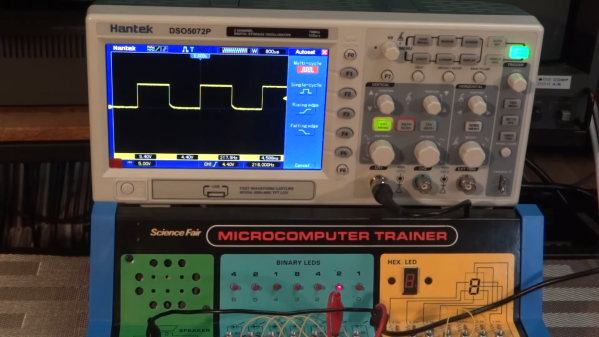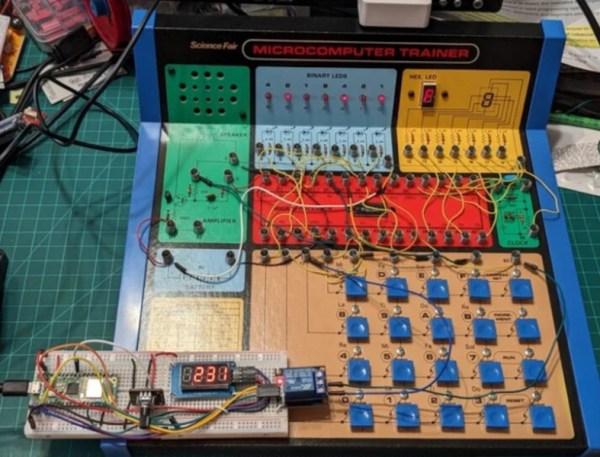Early computer kits aimed at learning took all sorts of forms, from full-fledged computer kits like the Altair 8800 to the ready-made MicroBee Computer-In-A-Book. For those just wanting to dip their toes in the computing world, many low-cost computer “trainers” were released, and Japan had some awesome ones. [Jason Jacques] shows off his Gakken Micro-Computer FX-System (or is it the FX-Computer? Or maybe the FX-Micom? It seems like they couldn’t make up their minds). In any event, it was a combination microcomputer and I/O building blocks system running a custom version of the Texas Instrument TMS1100 microprocessor. Specifically designed to introduce users to the world of computing, the included guide is very detailed and includes 100 example programs and lots of information on how all the opcodes work.
This 4-bit system is similar to the Kenbak computer, with a very simple instruction set and limited address space. However, adding electronic components in plastic blocks brings this machine to a new level of interactivity. Connections can be made to and from the microcomputer block, as well as to the on-board speaker and simple input/output pins. The example circuit displayed on the front cover of the box enables the microcontroller to connect to the speaker and allows a switch to light up a small incandescent bulb. We can imagine many users wiring up all sorts of extra components to their FX-Computers, and with the advent of 3D printing, it wouldn’t be difficult to create new blocks to insert into the grid.












